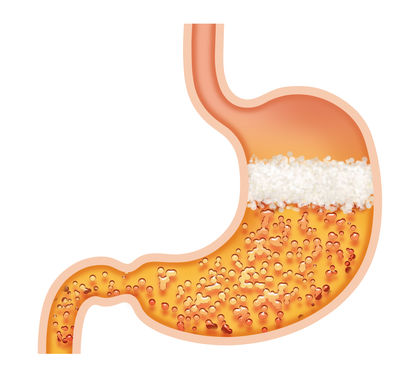Disulfiram

Definition
Disulfiram is an aldehyde dehydrogenase inhibitor. It prohibits the activity of aldehyde dehydrogenase, an enzyme found in the liver. In the United States, disulfiram is sold under brand name Antabuse.
Purpose
Disulfiram is used as a conditioning treatment for alcohol dependence. When taken with alcohol, disulfiram causes many unwanted and unpleasant effects, and the fear of these is meant to condition the patient to avoid alcohol.
Description
Two Danish physicians who were investigating disulfiram for its potential benefits to destroy parasitic worms took disulfiram and became sick at a cocktail party. After a series of pharmacological and clinical studies, it was determined that disulfiram interacts with alcohol.
Disulfiram by itself is not toxic. If taken with alcohol, however, it alters certain steps in the breakdown of alcohol. When alcohol is ingested, it is converted first to a chemical called acetaldehyde. Acetaldehyde is further broken down into acetate. In order for acetaldehyde to be broken down into acetate, aldehyde dehydrogenase needs to be active. Disulfiram is an aldehyde dehydrogenase inhibitor. Since disulfiram blocks the activity of aldehyde dehydrogenase, acetaldehyde cannot be broken down and the levels of acetaldehyde become five to ten times higher than the normal levels. This causes uncomfortable effects that encourage the person to avoid alcohol.
Disulfiram comes in a 250- and 500-mg tablet.
Recommended dosage
Disulfiram therapy should be started only after the patient has abstained from alcohol for at least 12 hours. The initial dose may be as high as 500 mg taken once daily. If the medication is sedating, the dose can be administered in the evening. Ideally, though, the daily dose should be taken in the morning—the time the resolve not to drink may be strongest. The initial dosing period can last for one to two weeks.
Maintenance dose can range anywhere from 125–500 mg daily with the average dose being 250 mg daily. Disulfiram therapy should continue until full recovery. This may take months to years, depending upon patient's response and motivation to stop using alcohol. The duration of disulfiram's activity is 14 days after discontinuation, and patients need to avoid alcohol for this period of time.
Precautions
Before beginning therapy, patients should be carefully evaluated for their intellectual capacity to understand the goal of therapy, behavioral modification with negative reinforcement . Patients with history of psychosis , severe myocardial disease, and coronary occlusion should not take disulfiram. People with diabetes taking disulfiram are at an increased risk for complications. Severe liver failure has been associated with the use of disulfiram in patients with or without a prior history of liver problems. People with advanced or severe liver disease should not take disulfiram. Disulfiram should never be given to patients who are in a state of alcohol intoxication or without the patient's knowledge. Those patients with history of seizures , hypothyroidism, or nephritis need to use disulfiram with caution and close monitoring.
Besides avoiding alcohol, patients should also avoid any products containing alcohol. This includes many cold syrups, tonics, and mouthwashes. Patients should not even use topical preparations that contain alcohol such as perfume and after-shave lotion.
Side effects
The most common side effect of disulfiram includes drowsiness and fatigue . Many patients experience metallic or garlic-like aftertaste, but most patients develop tolerance to this effect.
In addition, disulfiram is also associated with impotence. This is most common in doses of 500 mg daily. Disulfiram can also cause blurred vision, skin discoloration, inflammation of the skin, increased heart rate, and mental changes.
During the first three months of therapy, patients should have their liver function evaluated. Patients need to be monitored for the signs of jaundice, nausea, vomiting, abdominal pain, light stools and dark urine as these may be the signs of liver damage due to disulfiram. The signs of alcohol ingestion include flushing, headache, nausea, vomiting and abdominal pain.
Interactions
Disulfiram can make cisapride, benzodiazepines, astemizole, cyclosporine, erythromycin, and cholesterol-lowering drugs called statins more toxic. Disulfiram in combination with isoniazid, MAO inhibitors (such as phenelzide and tranylcypromine ), metronidazole, omeprazole and tricyclic antidepressants may cause adverse central nervous system effects.
In addition, disulfiram may raise the concentrations of the medications theophylline and phenytoin in the body. Disulfiram may put patients on warfarin (a blood-thinning drug) at an increased risk of bleeding. Disulfiram should never be used with tranylcypromine and amprenavir oral solution.
Disulfiram may react even with small amounts of alcohol found in over-the-counter cough and cold preparations and any medication that comes in an elixir form.
Resources
BOOKS
Gilman, Alfred G. The Pharmacological Basis of Therapeutics. New York, NY: McGraw-Hill, 1996.
Kay, Jerald. Psychiatry:Behavioral Science and Clinical Essentials. Philadelphia: W. B. Saunders Company, 2000.
Lacy, Charles. Drug Information Handbook. Hudson, OH: Lexi-Comp, Inc., 2002.
Wyeth-Ayerst Laboratories Staff. Product Information: Antabuse, disulfiram tablets. Philadelphia, PA: Wyeth-Ayerst Laboratories, 2000.
Ajna Hamidovic, Pharm.D.
Comment about this article, ask questions, or add new information about this topic: